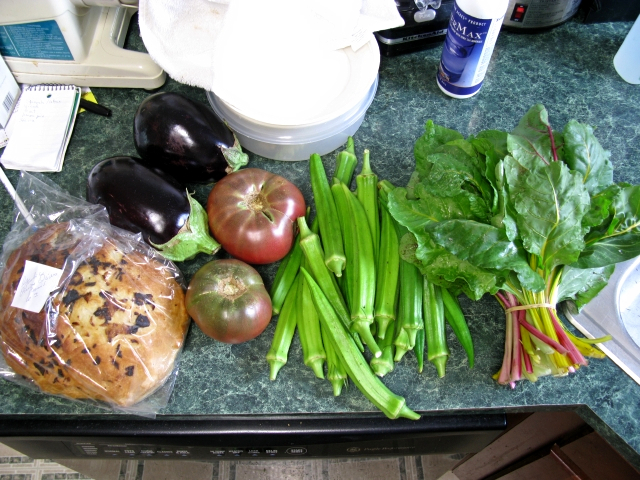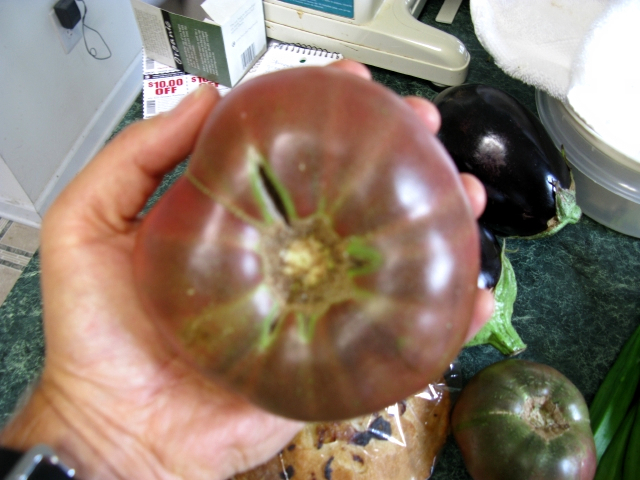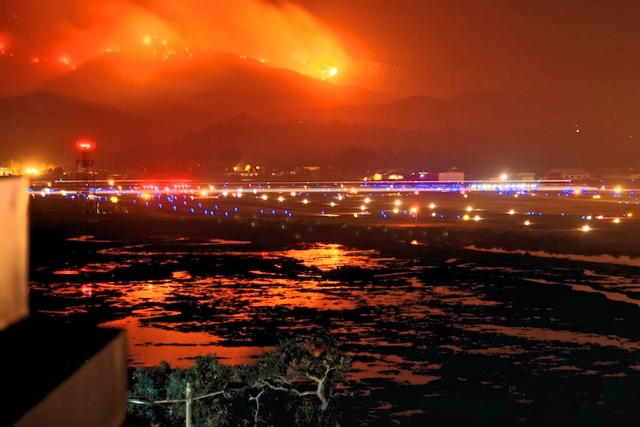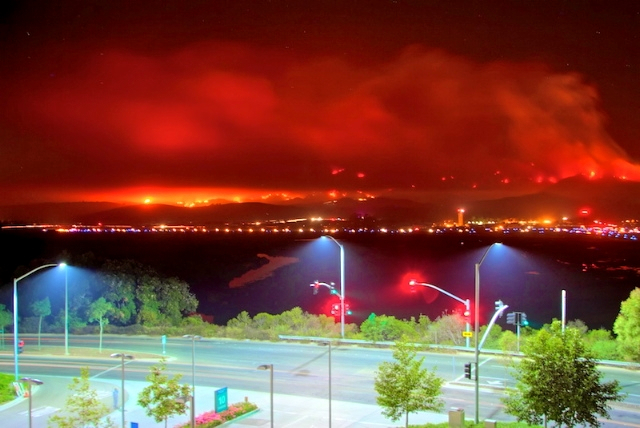Quick, early dash to the Matthews Farmers Market to get back home for the start of the Tour de France. Came home with veggies and bread. Sammy Koenigsberg's harvest has shifted away from greens to tomatoes, potatoes, eggplant, garlic, and okra, but still some baby chard. I also got a couple of loaves of bread from Baker's Blessing -- a sweet Latino lady who makes bread without milk and eggs. The round loaf is olive-garlic-basil, and I'd already stuck a loaf of mixed spelt in the freezer. Delicious breads.

I got these heirloom tomatoes from Sammy -- picked a couple of hand-sized ones to be able to take single slices out large enough to cover an entire piece of bread for a summertime tomato sandwich.

I'm especially looking forward to the beautiful okra I got from Sammy to go in soups. Would love to fry it to indulge in that southern summer tradition, but I'll pass on the fried oil and heat the okra gently in the slow cooker along with beans for soup.
As I said, the Tour de France begins today -- arguably the most difficult sporting event in the world. Ironman triathlons come close, but the sheer length of the Tour (three weeks, 2,2000+ miles over Europe's highest mountains) gives the latter the nod. The official Tour web site is here. As much as the bike riding, I love the Tour broadcast because of the views of France provided in the abundant TV shots from the helicopters employed. America is too young to have the kind of architectural history and tradition that Europe has. The stately chateaux, castles, country churches, and city cathedrals are just stunning, and the Versus Network producers give plenty of time to them in their coverage. Watching the Tour is like watching a tour of French history -- the Tour commentators seem well-armed each year with facts and figures about the various sites. Well worth watching.

I got these heirloom tomatoes from Sammy -- picked a couple of hand-sized ones to be able to take single slices out large enough to cover an entire piece of bread for a summertime tomato sandwich.

I'm especially looking forward to the beautiful okra I got from Sammy to go in soups. Would love to fry it to indulge in that southern summer tradition, but I'll pass on the fried oil and heat the okra gently in the slow cooker along with beans for soup.
As I said, the Tour de France begins today -- arguably the most difficult sporting event in the world. Ironman triathlons come close, but the sheer length of the Tour (three weeks, 2,2000+ miles over Europe's highest mountains) gives the latter the nod. The official Tour web site is here. As much as the bike riding, I love the Tour broadcast because of the views of France provided in the abundant TV shots from the helicopters employed. America is too young to have the kind of architectural history and tradition that Europe has. The stately chateaux, castles, country churches, and city cathedrals are just stunning, and the Versus Network producers give plenty of time to them in their coverage. Watching the Tour is like watching a tour of French history -- the Tour commentators seem well-armed each year with facts and figures about the various sites. Well worth watching.









